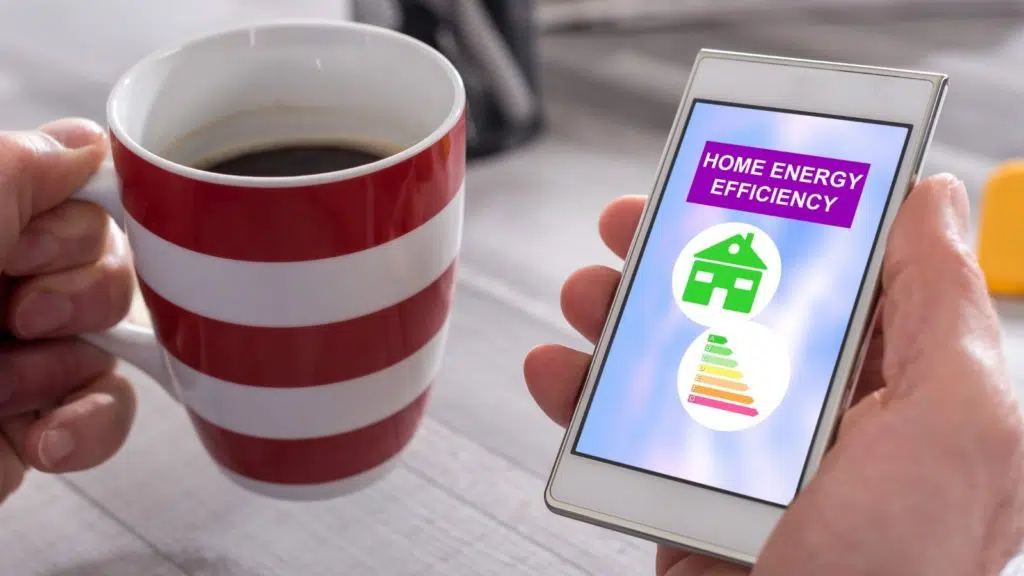
Whatever your reason for going (or wanting to) green in your new home, you’ve likely heard of Energy Star, the longstanding Environmental Protection Agency-backed program helping individuals to protect the environment through energy-efficient products.
In fact, it’s not unlikely that you’ve contemplated buying or already own an Energy Star certified appliance, door or air conditioner. Don’t just stop there — Energy Star Certified New Homes, are putting their stamp of approval on more than individual products, but entire homes.
Why should you choose a home that’s energy efficient, like an Energy Star Certified New Home? Well, lots of reasons:
Big Savings, Big Results
Projecting an average of 20-percent annual utility savings and thousands of dollars in upkeep costs, the Energy Star Certified New Homes built in 2013 conserved the equivalent of 409,308,846 pounds of carbon dioxide or 159,824,541 pounds of coal.
The Dunson family of Victorville, Calif., recently purchased an Energy Star certified home from KB Home. They say their utility bills were slashed in half, despite buying a larger home, and note “how wonderful it is to be doing [their] part for a better tomorrow.”
Signed, Sealed, Delivered
The secret to any Energy Star Certified New Home starts with the framework.
Quality insulation and sealant prevent the passage of air and temperature variations through the skeleton of your home. Additionally, high-performance windows are coated to protect from damaging ultraviolet light and help maintain a consistent indoor temperature despite the outdoor climate.
Dean Harris, of Phoenix, Ariz., opted for an Energy Star Certified New Home from Beazer Homes. He says that his home’s heat-reflecting windows and radiant barrier roof help him to keep out the warm weather, all while keeping his electric bill under $92.
Cool Off, Breathe Easy

Sometimes it’s not your HVAC system that’s problematic, but how it’s installed. Energy Star professionals use best practices to install your system to deliver a more efficient heating and cooling system that doesn’t leak. Proper installation ensures a quieter operating experience while the Energy Star seal promises moisture regulation and a reduction of indoor allergens.
Mechanical ventilation installed throughout the house also helps to filter out pollutants for better indoor air quality. “During the summer it definitely stays cooler,” says Ryan Miller and Melanie Miller of Salt Lake City, Utah, of their Gold Medallion — and Energy Star certified — home. “You get a tight seal … that keeps the cool air in and hot air out.”
Rain, Rain Go Away
Water damage is one of the most terrible fates your home can suffer. That’s why Energy Star builders protect materials during construction to ward off mold and prevent rotting. Moisture resistant barriers are applied to your home to keep it from being damaged by water and increase its durability over the years. Proper drainage enables water to be ushered off your roof and away from your foundation, while the slight incline your home sits on promotes the downward flow of rain and drainage.
The Feature Affair
Now it’s time to choose your appliances. Since roughly 20 percent of your energy usage comes from appliances, it’s important to look to cost-saving devices.
Energy Star has them all: lights, refrigerators, dishwashers, clothes washers, ceiling fans and ventilation systems. But you’re not just limited to one or two choices. There are hundreds of Energy Star-certified appliances across a variety of categories affording you the flexibility to design a cohesive home to your tastes. The Orrock family of Las Vegas, Nev., says that during the last year in which they’ve lived in a green home, they’ve noticed substantial savings in their overall energy consumption.
Green homes are the way of the future. With so much to offer consumers in the way of financial and energy savings, as well as long-standing warranties and durability measures, going with an Energy Star Certified New Home is an easy choice. The larger upfront costs of an energy-efficient home will be more than made up for with lower utilities and maintenance costs over the years.
Learn more about energy efficiency standards with the HERS rating.